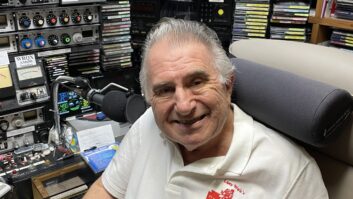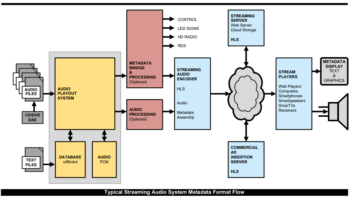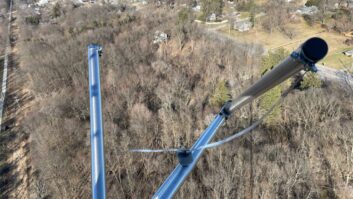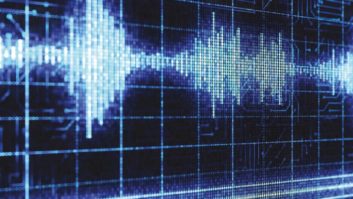
The author is principal of Kean Consultants, Falls Church, Va.
As the chairman of the NRSC AM and FM Analog Broadcasting (AFAB) Subcommittee’s Document Management Working Group (DMWG), which recently reviewed the NRSC-1-B Standard and reaffirmed its specification of an AM preemphasis/deemphasis system, I feel it is necessary to respond to Larry Langford’s commentary, “AM Preemphasis — Time for a New Curve?” Mr. Langford misinterprets the purpose of preemphasis and the DMWG’s intent, and he misinforms readers on some technical points.
Larry should have participated in our review and updating of the NRSC-1 Standard last year: he would know that the DMWG spent considerable time discussing the preemphasis curve prescribed NRSC-1-B. In the update process, the DMWG needed a contour that could be used with the fixed response of receivers, so that engineers could test overall system performance. We understand that AM receivers have evolved with a severe rolloff in response, but we agreed the amount of high-frequency boost to compensate for this roll off is impractical (as explained below), and importantly, would be reinforcing what we considered the poor condition of receiver audio fidelity.
[Read: AM Preemphasis — Time for a New Curve?]
Preemphasis in transmission is intended to be a complementary process with receivers. The Oxford Dictionary defines it this way:
“A systematic distortion applied to an audio or video signal prior to transmission or recording, usually in order to improve signal-to-noise ratio, involving an increase in the relative strength of certain frequencies in anticipation of a corresponding decrease (deemphasis) made during reception or playback.” (emphasis added)
Nevertheless, the amount of preemphasis has it limits, as noted in an RCA Review article by Murray Crosby, in January, 1940:
“… the use of preemphasis circuit at the transmitter and a deemphasis circuit at the receiver produces an overall gain in signal-noise ratio. This gain depends upon the fact that the higher modulation frequencies of voice and program material are of such a small amplitude that their accentuation does not increase the peak voltage of the applied modulating wave as much as the restoring circuit at the receiver reduces the noise.”
It is beyond the scope of this reply, but I think we all agree that modern program energy does not roll off by 9 dB at 4 kHz, which would allow the “boost” suggested by Larry without a high “peak voltage.” The amplitude of these high-frequency peaks must be decreased by dynamic compression, with a cost to fidelity. Of course, we preemphasize in FM with a 75 microsecond curve having a boost of approximately 8 dB at 5 kHz, and we know this boost requires fairly aggressive limiting and clipping to tame modulation. (The NRSC’s AM preemphasis uses a “modified 75 µs AM Standard Preemphasis Curve” having a second time constant that reduces boost to 10 dB at 10 kHz.)
NRSC G-100-A, which the DMWG also reviewed and updated (to be released soon as NRSC-G100-B), includes a measurement of 30 consumer AM receivers in 2005 (carried out by this writer, at NPR Labs), for all receiver categories. The median audio frequency response of the test population had a -10 dB point of 4100 Hz, relative to 1 kHz. However, the median response at 10 kHz was approximately -31 dB, and no practical amount of preemphasis can correct this loss.
The DMWG members understand that most broadcasters override a program’s spectral characteristics with modern audio processing devices. This continuously changes the frequency response of the content at the expense of a loss of spectral balance and dynamics. That is the result of Larry’s promoting a large “bell curve boost” at 4 kHz: to avoid reducing the overall level to handle the excess peaks (as Crosby noted in 1940), one uses aggressive compression to tame the overshoots, which is okay for communications but I believe is not improving the fidelity of AM.
The roll off above 4 kHz that Larry proposes would make AM no more than a 4 kHz system – in all receivers. Even testing with recent, rolled-off AM radios, listeners in the NPR Labs study showed a preference for full 10 kHz transmission bandwidth, with decreasing scores as the bandwidth was reduced. (However, Larry’s heart seemed to be in the right place, noting in a June 15, 2018, Radio World commentary: “… we must stop beating the modulation to death or we will chase away ALL of our listeners to FM. The radios sound bad enough by themselves; we don’t need to increase distortion and muddiness with bad tuning.”)
With today’s technology, I believe an optimal solution is to use the NRSC preemphasis and leverage digital signal processing in AM receivers to lower noise and improve audio bandwidth. The AFAB Subcommittee recently approved an initiative by its the AM Improvement Working Group to study the effectiveness of DSP in AM receivers, as well as a closer look at electrical and electronic noise affecting the AM broadcast band. The DSP study, expected to be completed within a year, may provide both technical and audio demonstrations of the potential listener experience. With that, I hope we can adhere to some of the psychoacoustic principles that were known 80 years ago.












